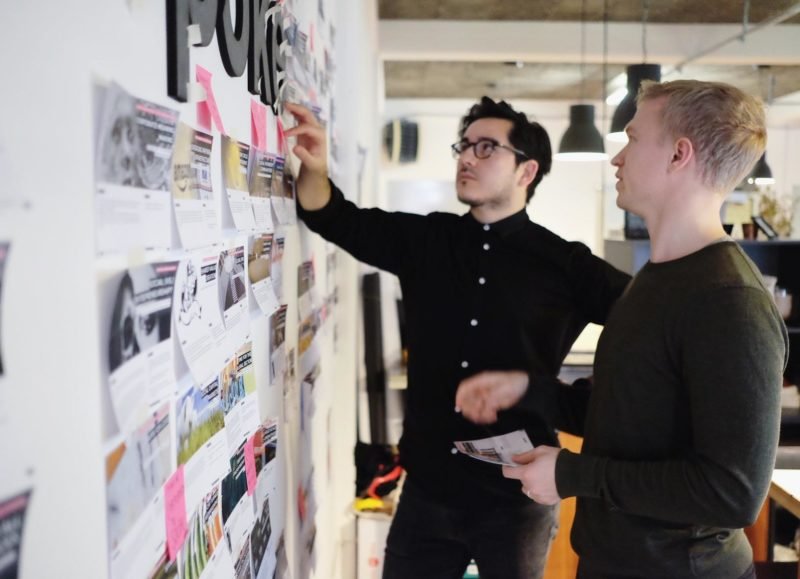Trend 3: The Reinvention Of The Post Box
In our trend article about online shopping and its ability to revitalize streets, it has become pretty obvious that e-commerce has a big impact on space and life. One of the major inconveniences of buying products online is the delivery process that’s still very inflexible. Several companies and initiatives come up with creative solutions to solve this problem.
Waiting for packages sucks big time since urban lifestyles are more flexible than ever. As the fixed address is slightly becoming an old-fashioned concept, the post box of the future will be movable in terms of space and time. New-style post boxes take different shapes and forms, pop up where needed, and don’t require a direct link with home addresses. Several companies around the world are working on futuristic concepts that redefine the post box, and make parcel delivery processes fit with modern lifestyles. We’ve collected some interesting examples.


A major development is the emergence of concepts and initiatives that are focused on spatial networks of neighborhood pick-up spots. ShopRunner is one of these businesses. Named one of America’s most promising companies by Forbes, ShopRunner’s mission is to build a nation-wide network of over 30,000 retail store locations where consumers can choose to pick up packages that have been ordered online. The company’s PickUpPoints program was launched in Philadelphia and allows customers to pick up purchases from locations that are part of the network, including 7-Eleven and Toys”R”Us stores. A concept similar to ShopRunner is MissNev, while UK start-up UseYourLocal enables the British to get their package delivered at the spot they spend most of their time — the pub.

The examples mentioned above not only redefine the post box — they could also be a financial impulse for local business owners. Another innovative take on package delivery comes from a bunch of companies, varying from fresh start-ups to classic giants like DHL, that are busy rolling out networks of automatic lockers and parcel machines where customers can pick up their packages. We came across plenty of them last year. Last November we published an article on the bright green Logibox-operated vending machines at railway stations shopping centers and other busy spots in Russia. Customers who purchase a product online can choose delivery method ‘Pochtomat’ and choose the address of the nearest machine. As soon as the parcel arrives at the machine you receive a text message. People have three days to pick up their package. QiwiPost is a similar kind of post box service. This Eastern European system of locker boxes offers the same service as the Logibox machines. To pick up a parcel, customers have to open one of the lockers entering a specific access code and their mobile phone number using the terminal’s numeric keypad.



Also the big boys feel the need to fill this market gap and have seriously started working on their locker box networks. DHL calls them ‘Packstations’ and the national Belgian post company Bpost has recently launched its ‘Bpack 24/7’ concept. The fact that even Google has started to intervene in this market segment says something. Last November, the Internet giant bought the Ontario-based company BufferBox. BufferBox gives members a specific address that should use every time they plan on receiving a package. Once the delivery arrives you’ll receive a unique PIN by email, with which you can open up your BufferBox and grab your package. The fixed address thing makes BufferBox less flexible than the Logibox pochtomat concept, but it allows for more express services than, for instance, Amazon’s Locker — yet another parcel delivery machine concept.


The locker boxes are still a little inflexible. The innovative Belgian company Cardrops says to have the solution — using trunks of cars to drop off packages. “Although we drive them around, cars are still parked 90% of their time”, explain the founders. A special GPS tracking system, developed by the company, looks up the real-time location of your car and sends delivery straight to your car, wherever it’s parked. Based on the car’s GPS data, the delivery system is able to create a heat map of the exact locations where your car is parked the most. Based on the daily and weekly routines of the car, Cardrops automatically predicts ahead when your parcel can be delivered. The delivery guy will lock/unlock the trunk or doors using a special unit that’s installed by the company’s service men. Now that sounds flexible, huh?



UK-based SoPost claims to re-invent the post box by enabling people to use their digital and online identities (Twitter, Facebook, phone number, email address) as their postal addresses. “We don’t think that an address should be a house number and postcode — it should be where you are, or where you want your mail to be sent.” That’s not a stupid thought, since people change location more more often than phone number or email address. Users who sign up (it’s free) can attach as many physical addresses as they like, and set up a schedule for when they’re likely to be where. Since the company is working with online retailers, there are no address forms to fill in any more. We’re very curious how this idea is going to develop.


Oh, if you only want your post box to be a little bigger so it can handle packages, the ParcelPod, “the post box for multiple unattended deliveries”, is the right thing for you. And if you want your parcel delivery box to be a little more stylish, consider the iBin.
This article is part of Pop-Up City’s Trends for 2013. Reflecting on what we’ve written in 2012 and looking into the new year, we’ve composed a new list of remarkable trends that we consider to be important for our cities in the coming time. Feel free to contact us in case you want to learn more about our reports.



